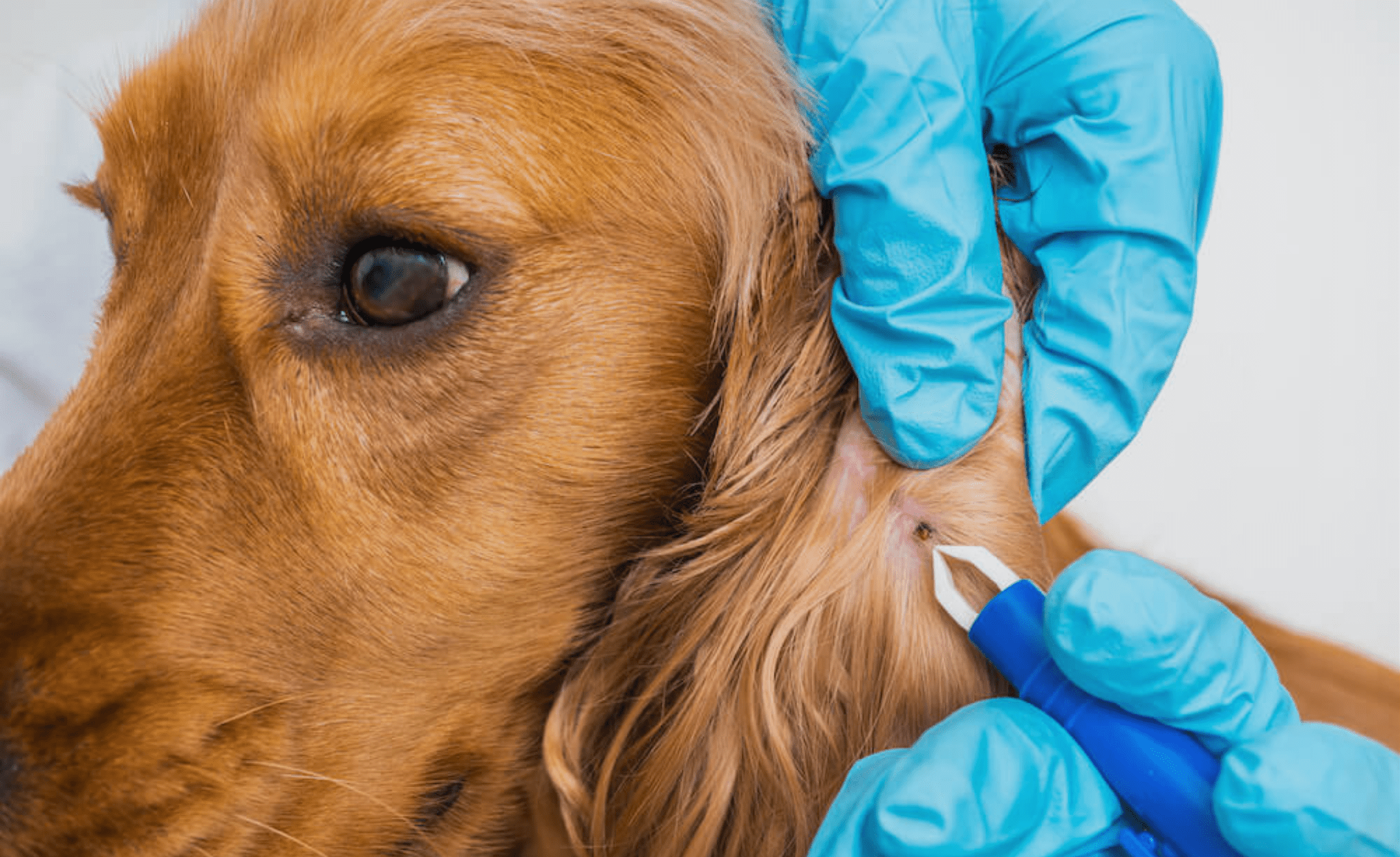Fleas and ticks on dogs are common external parasites that can affect dogs. Here’s some information about fleas and ticks on dogs and how to deal with them:
Fleas:
Fleas are small, wingless insects that feed on the blood of animals. They can cause intense itching, skin irritation, and can transmit diseases. Signs of flea infestation in dogs include scratching, biting at the skin, hair loss, and the presence of flea dirt (small black specks resembling pepper) in the fur.
Prevention And Treatment:
Vacuum your home thoroughly and wash your dog’s bedding frequently to eliminate fleas and their eggs.
Groom your dog regularly with a flea comb to remove any adult fleas.
If your dog has a severe flea infestation, consult your veterinarian for appropriate treatment options.
Ticks:
Ticks are arachnids that attach themselves to animals to feed on their blood. They can transmit diseases such as Lyme disease, ehrlichiosis, and babesiosis. Ticks can be found in wooded areas, tall grass, and brush, and can latch onto your dog when they pass through these environments.
Prevention And Removal:
- Use tick-preventive products recommended by your veterinarian, such as topical treatments or tick collars.
If you find a tick, use tweezers or a tick removal tool to grasp it as close to the skin as possible and gently pull it straight out. Avoid squeezing or twisting the tick, as it may leave its mouthparts embedded in the skin.
How To know My Dog Has Fleas And Ticks?
If a dog has fleas and ticks, it is usually because they have come into contact with these parasites in their environment. Here are some common ways dogs can acquire fleas and ticks:
Outdoor Exposure:
Dogs that spend time outdoors, especially in areas with tall grass, wooded areas, or brush, are more likely to come into contact with fleas and ticks. These parasites can jump onto the dog’s fur or attach themselves when the dog brushes against vegetation.
Contact With Infested Animals:
Dogs can get fleas and ticks through contact with other infested animals such as stray dogs, feral cats, or wildlife like squirrels or raccoons. Fleas can easily jump from one animal to another, while ticks may transfer when dogs come in close proximity to infested animals.
Contaminated Environments:
Fleas and ticks can be present in the dog’s immediate environment, such as the yard, dog parks, or kennels. These parasites can survive in the environment and attach themselves to passing animals, including dogs.
Human Transmission:
Although less common, humans can inadvertently bring fleas and ticks into the home on their clothing or by attaching themselves to their bodies. These parasites can then transfer to the dog when in close contact.
How To Remove Fleas And Ticks From Dogs?

Gather the necessary tools, including gloves, tweezers or a tick removal tool, a flea comb, rubbing alcohol or soapy water, and a container for disposing of the parasites.
Check For Ticks:
Thoroughly inspect your dog’s entire body, paying close attention to areas where ticks commonly attach, such as the ears, neck, armpits, and between the toes. If you find any ticks, proceed to remove them.
Remove Ticks:
- Using gloves, grasp the tick as close to the skin as possible with tweezers or a tick removal tool.Apply gentle, steady pressure and pull the tick straight out without twisting or crushing it.Place the tick in a container with rubbing alcohol or soapy water to kill it.
Comb For Fleas:
Use a flea comb to carefully comb through your dog’s fur, paying attention to areas where fleas tend to hide, such as the neck, tail base, and groin area. The comb’s fine teeth can catch and remove adult fleas, flea dirt, and eggs.
Dispose of Fleas:
After each pass with the flea comb, quickly dip it into a container filled with rubbing alcohol or soapy water to drown and kill the fleas. This prevents them from jumping back onto your dog.
Conclusion:
In conclusion, wordsanimals provide complete guidance related to fleas and ticks. These are common external parasites that can affect dogs. These parasites can cause discomfort, itching and potentially transmit diseases to dogs. It’s important to take preventive measures to protect your dog from fleas and ticks.
Regularly checking your dog for fleas and ticks, using veterinarian-recommended flea and tick prevention products, and maintaining a clean-living environment are key steps in preventing infestations. If your dog does have fleas or ticks, proper removal techniques should be employed to ensure their complete elimination.
FAQ’s
Can Fleas And Ticks On Dogs Transmit Diseases?
Yes, fleas and ticks can transmit various diseases to dogs. Fleas can transmit tapeworms, while ticks can transmit diseases such as Lyme disease, ehrlichiosis, anaplasmosis, and Rocky Mountain spotted fever.
Can I Use Human Products To Remove Fleas And Ticks On Dogs?
No, you should never use flea or tick products meant for humans on your dog. These products can be toxic to dogs and may cause adverse reactions. Always use products specifically designed for dogs and consult with your veterinarian for appropriate recommendations.
Are There Natural Remedies To Repel Fleas And Ticks?
There are some natural remedies that may help repel fleas and ticks, such as certain essential oils (e.g., lavender, peppermint, eucalyptus), herbal sprays, or homemade repellent solutions. However, it’s important to note that natural remedies may not be as effective as veterinary-recommended products. Consult with your veterinarian for guidance on natural options and their safety for your dog.
Can I Remove A Tick With My Fingers?
It is not recommended to remove ticks with your fingers as you may accidentally squeeze the tick or leave its mouthparts embedded in your dog’s skin. Use tweezers or a tick removal tool to grasp the tick as close to the skin as possible and gently pull it straight out.
Can Fleas And Ticks Survive In Colder Months?
While fleas and ticks are more active during warmer months, they can still survive in colder climates. Some species of ticks can be active even in temperatures close to freezing. It’s important to maintain flea and tick prevention measures year-round.



